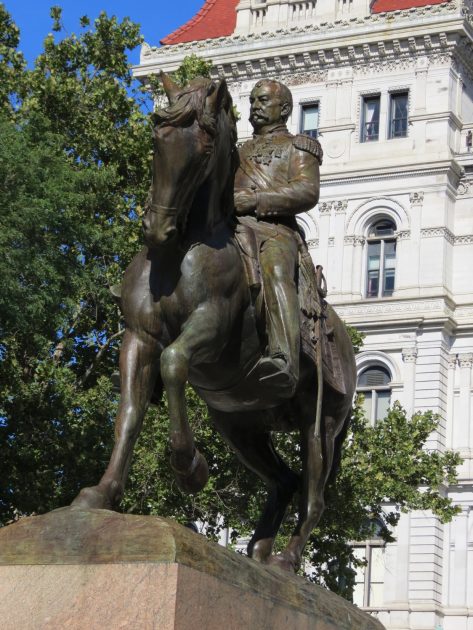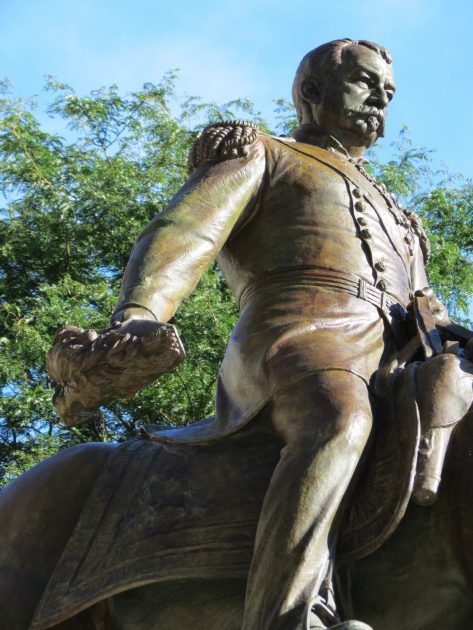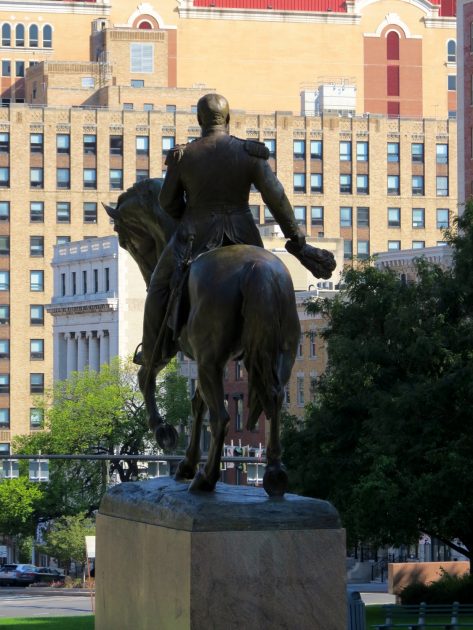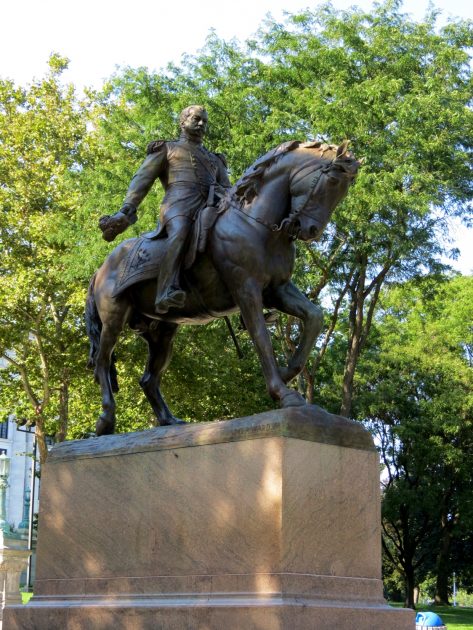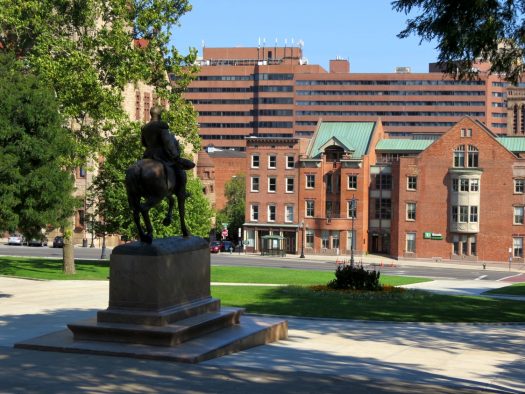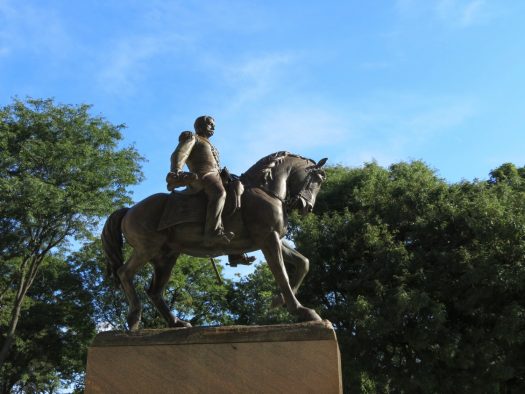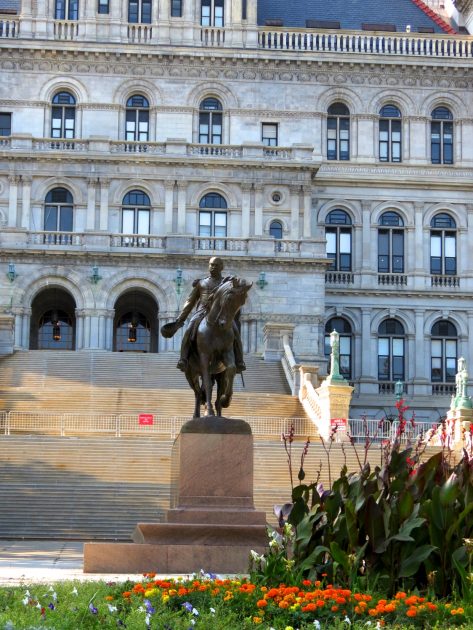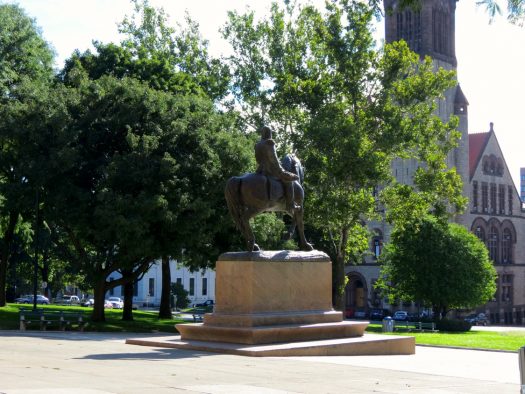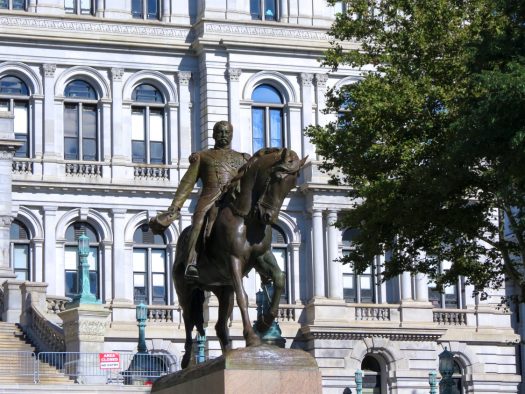Home | Sheridan, Philip H.
- CountryUS
- Town:NY Albany
-
Year of creation:1916
- Rider(s):Sheridan, Philip H.
(1831–1888) defeated Confederate forces in the Shenandoah Valley. His destruction of the economic infrastructure of the Valley, called ‘The Burning’ by residents, was one of the first uses of scorched-earth tactics in the war. Fully grown, he reached only 1.65 metres tall, a stature that led to the nickname, ‘Little Phil’. Abraham Lincoln described his appearance in a popular anecdote: ‘A brown, chunky little chap, with a long body, short legs, not enough neck to hang him, and such long arms that if his ankles itch he can scratch them without stooping’. In 1865, his cavalry was instrumental in forcing the surrender of Lee at Appomattox.
- Sculptor(s):Ward and French
John Quincy Adams Ward (1830 –1910) and Daniel Chester French (1850 – 1931) were both American
The sculpture was commissioned by the Society of the Army of Cumberland and sculptor John Quincy Adams Ward began modeling the piece as early as 1892. By 1906, after long delays, Ward was fired from the project, though he continued to work on the model until his death in 1910. In 1914, New York Governor Martin H. Glynn initiated his vision to have the memorial to Sheridan realized in Albany, Sheridan’s hometown. Daniel Chester French was willing to supervise the enlargement of Ward’s working model, and claim no artistic credit for himself. French enlarged the existing model and oversaw the casting, finishing, and installation of the memorial. Henry Bacon was the architect of the base.
-
The unveiling in 1916 of the Sheridan equestrian statue in Albany, New York has extensively been described in a booklet of no fewer than 124 pages. In it the description of almost everything with regard to the statue: the origin of the movement, the artists, the parade and unveiling ceremony, the reception, the dinner, etc., including the texts of addresses and remarks by dignitaries. The booklet ends with a list of all the committees and their members. There were committees for the grandstand, decorations, publicity, music, the entertainment for visiting organizations, souvenir badges, carriages and automobiles, transportation, the parade and the reception. And of course, a citizens’ committee, a Philip H. Sheridan camp no. 2000, sons of veterans committee, a list of officers of the joint committees and not to forget the New York State Sheridan Monument Committee.

